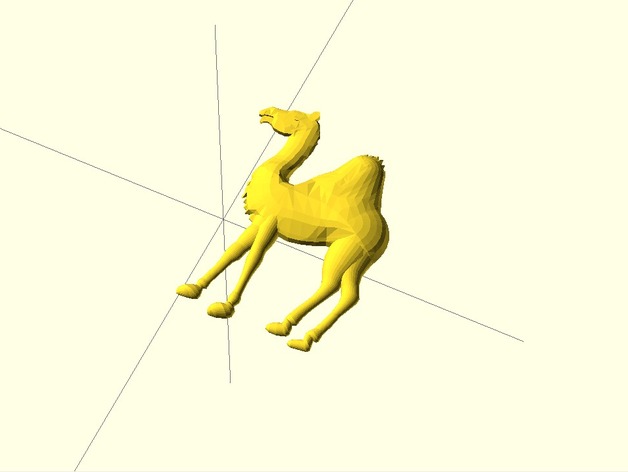
Camel_STL_DEAR_ZOO_TACTILEPICTUREBOOKSPROJECT_CU_BOULDER
thingiverse
CAMEL:\nI've taken away valuable lessons from studying the giraffe model and adjusted my strategy for body modeling as a result. Extruding the entire body at once produces odd volumes and often leads to tiny or overly large triangles, so I established a guiding principle: incorporating shape-based guidelines into my camel's anatomy. Professional artists utilize circles and other forms when creating drawings; thus, I adopted this technique for my model by placing guide spheres at critical points such as the hump and hips. I used the silhouette more intuitively during previous modeling attempts but have now transformed it into a definitive aspect of my work, extruding it in segments according to necessary adjustments. Starting from the center point, I would use these guide shapes as references while modeling around them by connecting newly formed vertices and shapes via gradual extrusions, creating natural curves and bends along the way. Although still constructed with semicircles and booleans like earlier designs (which sometimes made debugging troublesome), I have shifted focus to better-defined extrusion and vertex linking methods. In retrospect, integrating guide shapes is an impressive idea; however, its usefulness comes with trade-offs too: Strengths:\nspeeding up modeling thanks to predetermined volumes and pre-determined shapes beforehand Weaknesses:\ncrowding the workspace with lines and dots – causing visual disorientation since black, non-selective lines can easily confuse novice users - although some resolution could be reached by converting wireframe-solid viewports while lowering model opacity
With this file you will be able to print Camel_STL_DEAR_ZOO_TACTILEPICTUREBOOKSPROJECT_CU_BOULDER with your 3D printer. Click on the button and save the file on your computer to work, edit or customize your design. You can also find more 3D designs for printers on Camel_STL_DEAR_ZOO_TACTILEPICTUREBOOKSPROJECT_CU_BOULDER.
